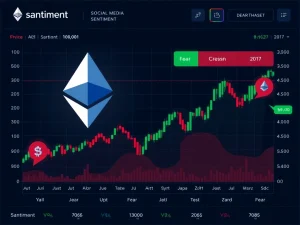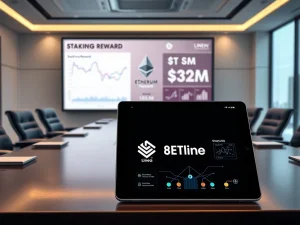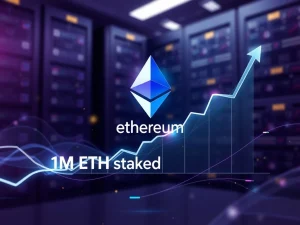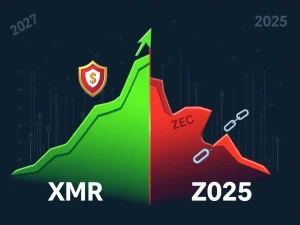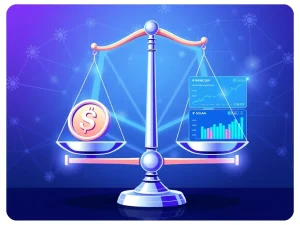XRP Price Shockwave: Ripple Co-Founder’s Massive Sell-Off Triggers Market Alarm
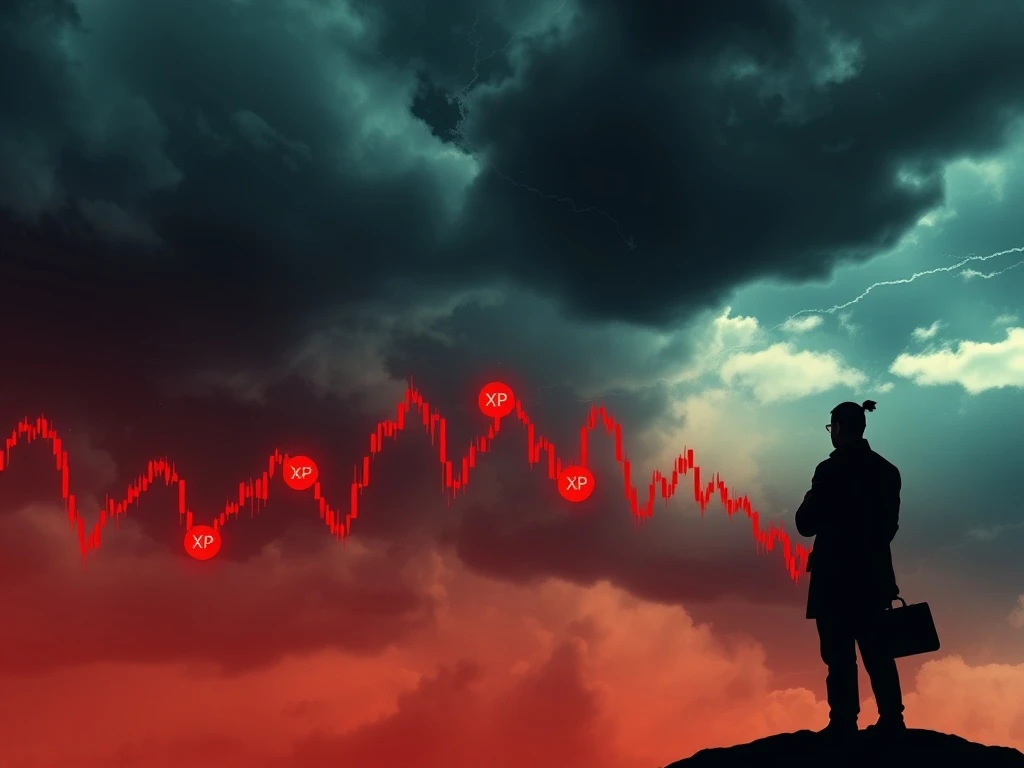
The cryptocurrency world was recently gripped by an alarming development: Ripple co-founder Chris Larsen reportedly offloaded a staggering $200 million worth of XRP tokens over a mere 10-day period in July 2025. This significant move sent a palpable shockwave through the market, coinciding with a sharp 17% plunge in the XRP price and igniting widespread investor concerns about liquidity and future stability. What does such a monumental transaction by a key figure mean for the future of XRP, and how should investors interpret these signals?
The Unsettling Details of the Ripple Co-Founder’s Sell-Off
On-chain data has painted a clear picture of Chris Larsen’s recent activity, revealing substantial transfers that have drawn intense scrutiny. Between July 17 and July 23, 2025, Larsen reportedly moved approximately 50 million XRP, valued at an estimated $175 million at the time. A significant portion of this—roughly $140 million—was directed to various exchanges or services, suggesting an intent to sell or distribute.
- Scale of Transactions: An estimated $200 million in XRP sold over 10 days.
- Key Dates: Major transfers observed between July 17 and July 23, 2025.
- Destination: A large portion (around $140 million) flowed to exchanges, indicating liquidation.
- Market Impact: Coincided with XRP’s sharpest daily decline since April 2025, briefly dropping below $3.
The timing of these transactions, directly preceding or during a period of significant price depreciation, has naturally raised questions about potential insider selling. While no direct causation has been definitively established between Larsen’s sales and the XRP price drop, the correlation is undeniable and has fueled speculation within the community.
Understanding the Influence of a Crypto Whale
Chris Larsen is not just any investor; he is a prominent Ripple co-founder and a substantial holder of XRP. His estimated 2.8 billion XRP tokens, allocated during Ripple’s 2012 pre-mine, position him as one of the largest individual influencers of XRP’s market dynamics. Such large-scale movements by a major holder, often referred to as a ‘crypto whale,’ can send ripples (pun intended) throughout the market for several reasons:
- Perception of ‘Exit Liquidity’: As analyst J.A. Maartun of CryptoQuant warned, significant sales by insiders or large holders can be perceived as them seeking ‘exit liquidity.’ This implies that they might be offloading their holdings into the market, potentially at the expense of retail investors who might be buying in.
- Supply Shock: Introducing a large volume of tokens onto exchanges can increase the available supply, putting downward pressure on prices, especially if demand does not absorb it.
- Loss of Confidence: When a key figure associated with a project sells a substantial portion of their holdings, it can erode investor confidence. It might lead market participants to question the seller’s long-term conviction in the asset, prompting others to follow suit.
While Forbes reported Larsen’s net worth at $10.8 billion, suggesting he can execute large sales without immediate personal disruption, the market’s reaction highlights the sensitivity to such moves. The incident underscores the inherent challenges in balancing institutional confidence with retail investor perception during volatile periods in the crypto space.
Market Stability Under Pressure: What This Means for XRP
The immediate impact on market stability was evident with the 17% price plunge. This rapid decline not only erased recent gains but also intensified fears of further downside. The incident has pushed XRP into a precarious position, forcing investors to re-evaluate their positions and the token’s immediate future.
The broader implications for XRP’s market stability extend beyond just price. They touch upon:
- Liquidity Concerns: Can the market absorb such large sales without significant price impact? Repeated large sales could strain market liquidity.
- Investor Sentiment: Fear, uncertainty, and doubt (FUD) can spread rapidly in crypto markets. If investors believe insiders are cashing out, it can lead to a broader sell-off.
- Volatility: Large whale movements contribute to increased volatility, making XRP a riskier asset for short-term traders and long-term holders alike.
Analysts caution that while whale activity certainly influences sentiment, XRP’s trajectory will ultimately be shaped by broader macroeconomic factors and, critically, regulatory developments.
Broader Context: The SEC Shadow and Other XRP News
The recent sell-off by the Ripple co-founder does not occur in a vacuum. XRP’s market performance and investor sentiment are heavily intertwined with its ongoing legal battle with the U.S. Securities and Exchange Commission (SEC). This protracted legal case, alleging that XRP is an unregistered security, has cast a long shadow over Ripple and its native token, creating significant regulatory uncertainty.
Chris Larsen himself has been a vocal critic of the SEC’s approach to cryptocurrency regulation, advocating for clearer guidelines. His silence on the recent sales, however, leaves the intent behind these transfers speculative. Are they a strategic portfolio rebalancing, a response to personal financial planning, or a signal related to the ongoing lawsuit?
Beyond the SEC case, the broader crypto market faces instability from various fronts, including:
- Scams and Exploits: The continuous threat of scams and security breaches erodes investor trust across the board.
- Global Economic Factors: Inflation, interest rate changes, and geopolitical events can influence risk appetite for cryptocurrencies.
- Regulatory Scrutiny: Governments worldwide are increasingly looking to regulate the crypto space, which can introduce new challenges and uncertainties.
All these elements contribute to the complex environment in which any significant XRP news, especially concerning a major holder, is amplified and analyzed.
Navigating Volatility: What Investors Need to Know
In light of the recent events and ongoing uncertainties, how should investors approach XRP? Here are some actionable insights:
- Monitor Regulatory Updates: The outcome of the SEC lawsuit remains a primary driver for XRP’s long-term outlook. Stay informed about any new developments or rulings.
- Track Network Advancements: Keep an eye on Ripple’s partnerships, adoption of its payment solutions, and any technological upgrades to the XRP Ledger. Fundamental growth can counteract negative sentiment.
- Observe Token Distribution Trends: Pay attention to on-chain data, especially large movements from known whale wallets or Ripple’s escrow releases. Understanding supply dynamics is crucial.
- Diversify Your Portfolio: Relying too heavily on a single asset, especially one with significant regulatory overhang and large whale influence, can be risky.
- Practice Risk Management: Only invest what you can afford to lose. Set stop-loss orders and have a clear exit strategy.
The incident highlights the delicate balance cryptocurrencies must maintain between fostering institutional confidence and managing retail investor perception, particularly during periods of heightened volatility. The path ahead for XRP remains uncertain, and informed decision-making is paramount.
Conclusion
The recent revelation of Ripple co-founder Chris Larsen’s substantial XRP sell-off has undoubtedly sent ripples of concern through the cryptocurrency market. While the exact motivations behind the $200 million sale remain speculative, its immediate impact on the XRP price and broader market stability is undeniable. This event underscores the profound influence of large holders, or crypto whales, and the pervasive anxiety surrounding potential insider selling in a market already grappling with regulatory ambiguities and macroeconomic pressures. As the crypto community digests this significant XRP news, investors are urged to remain vigilant, prioritizing due diligence and staying informed on all fronts—from on-chain analytics and regulatory updates to Ripple’s fundamental developments. Only through careful observation and strategic planning can one hope to navigate the complex and often unpredictable waters of the digital asset landscape.
Frequently Asked Questions (FAQs)
Q1: Who is Chris Larsen and why are his XRP sales significant?
A1: Chris Larsen is a co-founder of Ripple and one of the largest individual holders of XRP, with billions of tokens from the initial pre-mine. His sales are significant because large movements by such a prominent ‘crypto whale’ can influence market sentiment, liquidity, and price stability due to their perceived insider knowledge and the sheer volume of tokens introduced to the market.
Q2: What was the immediate impact of Chris Larsen’s XRP sell-off on the XRP price?
A2: The sales coincided with a sharp 17% plunge in the XRP price, marking its steepest daily decline since April 2025. The token briefly dropped below $3, sparking investor concerns about market liquidity and potential insider selling.
Q3: What is ‘exit liquidity’ in the context of crypto whale selling?
A3: ‘Exit liquidity’ refers to the situation where large holders (whales) sell their assets into the market, often implying that they are cashing out and that retail investors are providing the necessary liquidity by buying these tokens. Analysts sometimes warn that such activity could signal a potential top or a period of price decline for less-informed market participants.
Q4: How does the SEC lawsuit against Ripple affect XRP’s market stability?
A4: The ongoing U.S. Securities and Exchange Commission (SEC) legal case against Ripple, alleging XRP is an unregistered security, creates significant regulatory uncertainty. This uncertainty adds a layer of risk for investors and can contribute to volatility, making XRP’s market stability more vulnerable to events like large sell-offs.
Q5: What should XRP investors monitor after this news?
A5: Investors should closely monitor Ripple’s regulatory updates (especially concerning the SEC case), network advancements (new partnerships, adoption rates, technological upgrades), and token distribution trends (on-chain movements from large wallets and Ripple’s escrow releases). These factors will largely shape XRP’s future trajectory.



